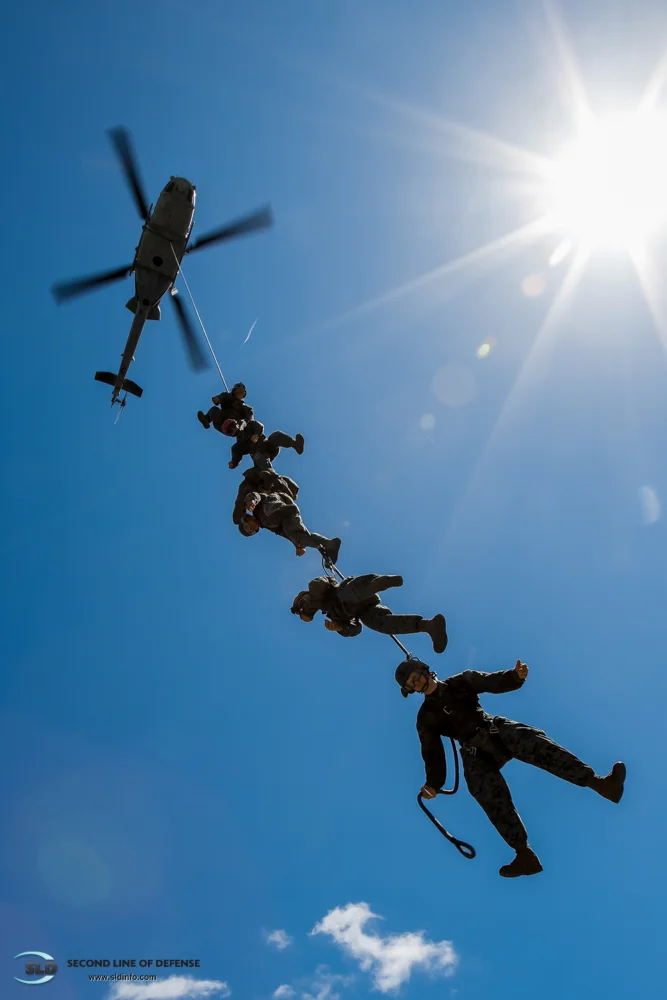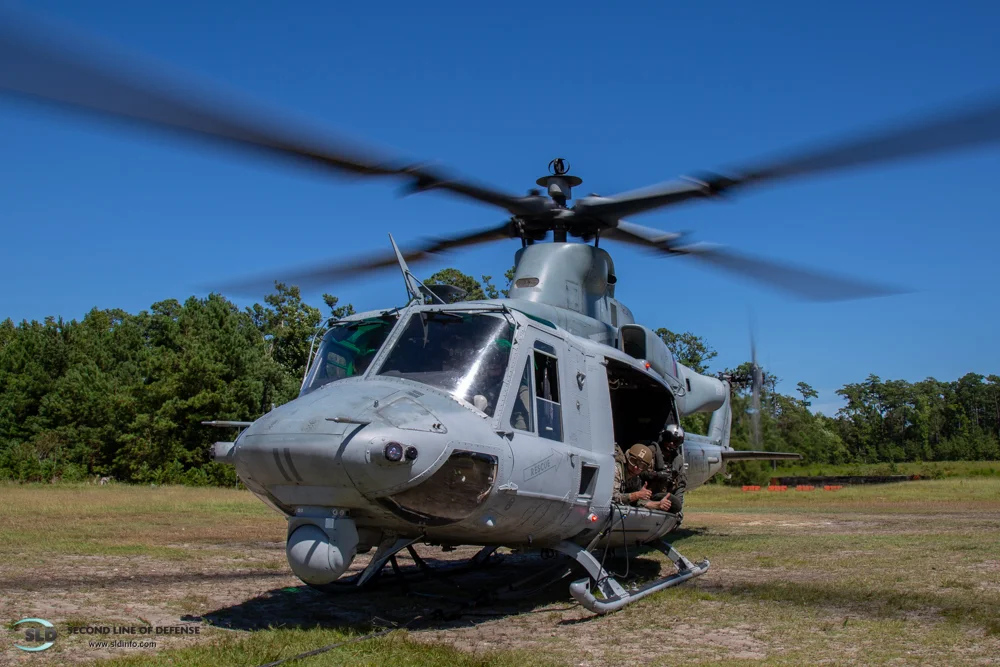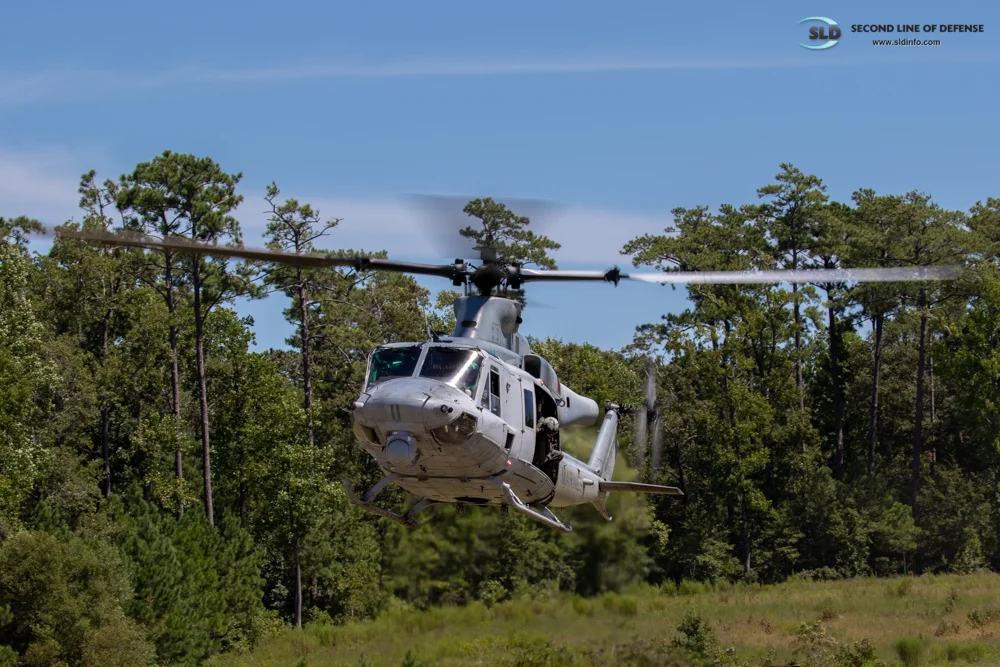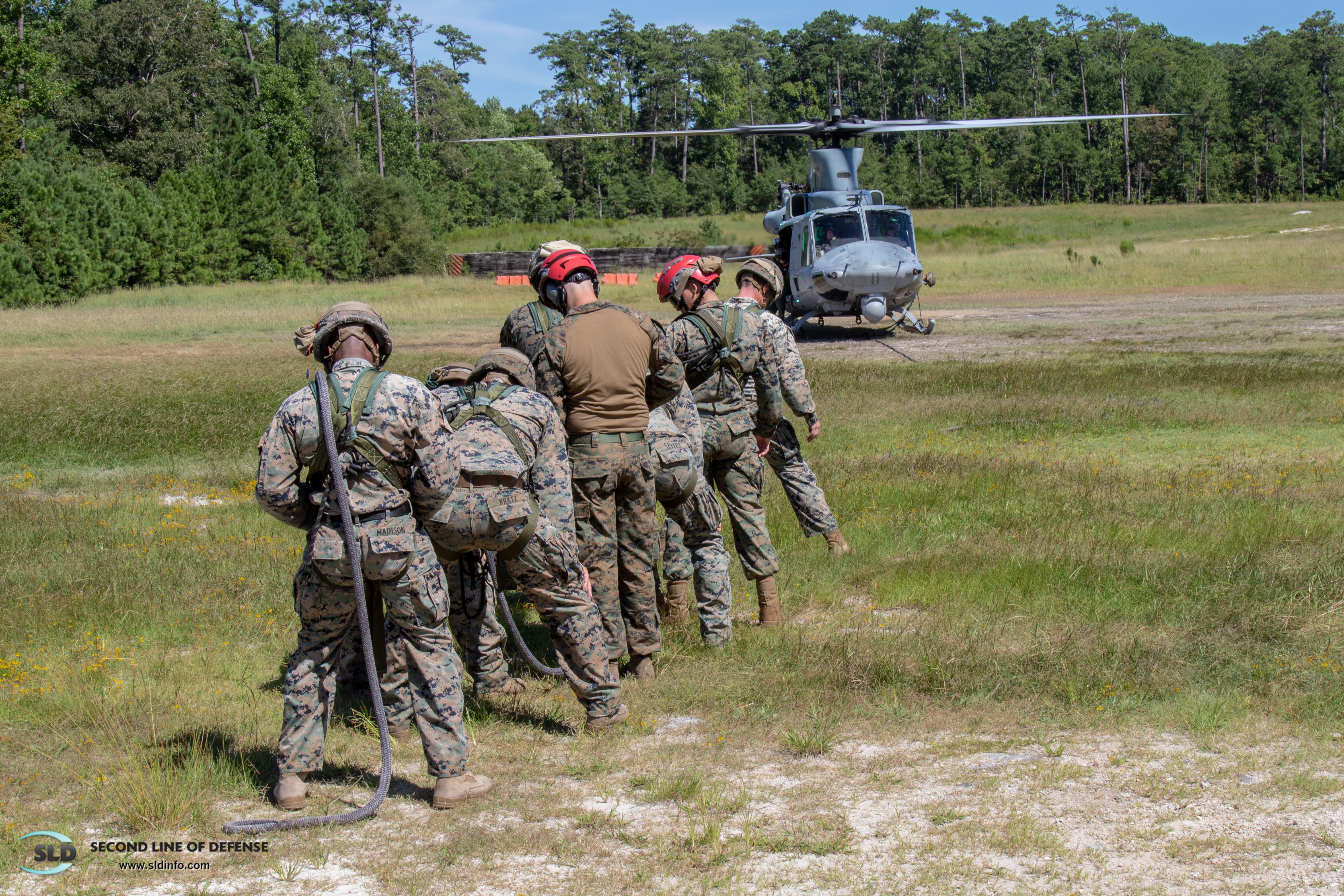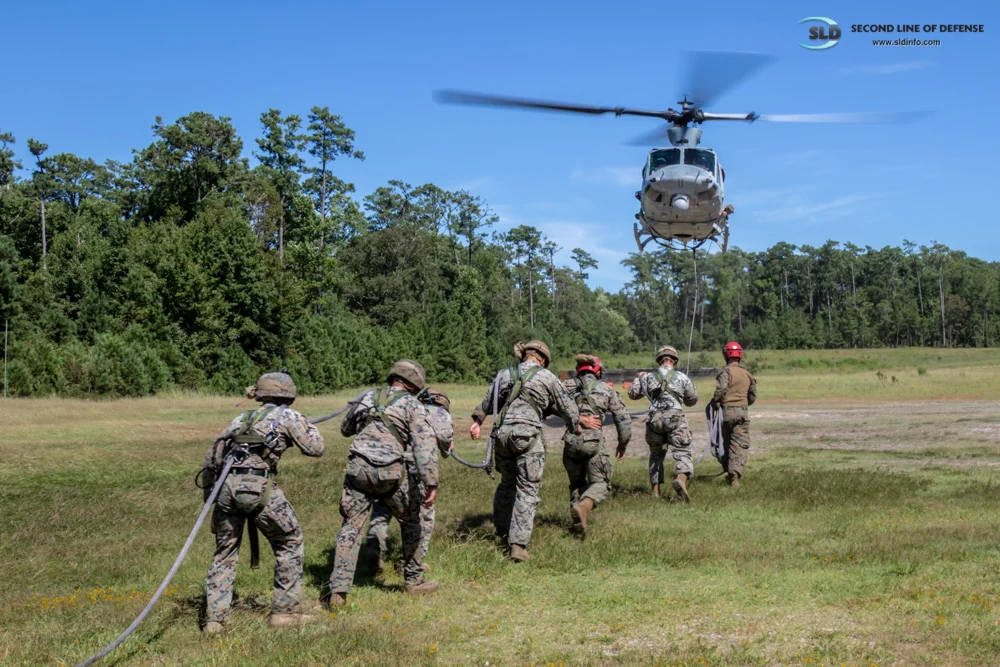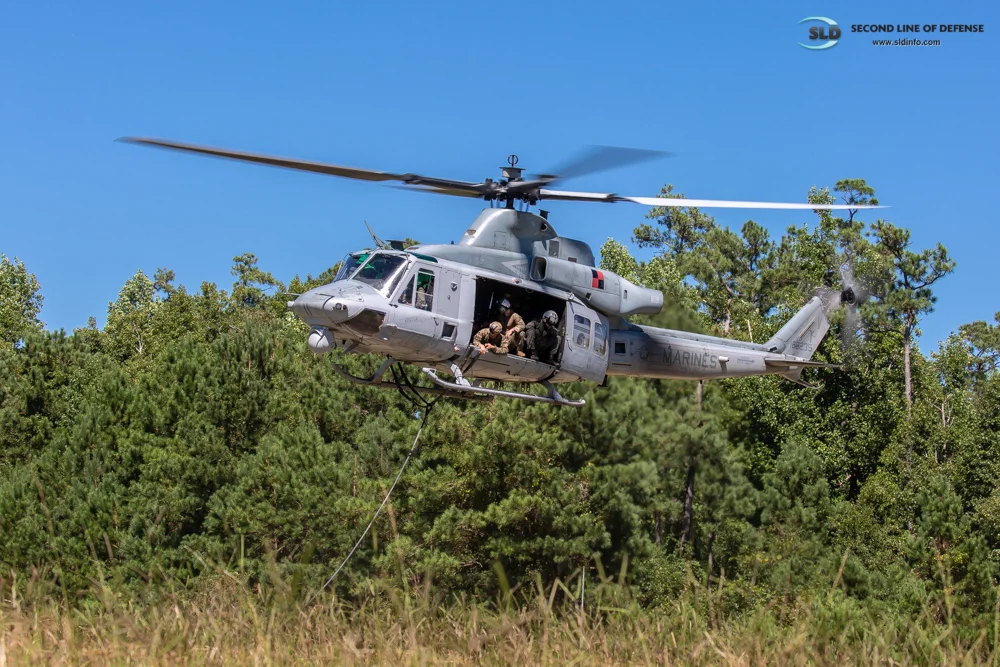By Todd Miller
One cannot overlook the signage as we snake our way through Stone Bay, Marine Corps Base Camp Lejeune. “Every Marine a Rifleman,” “One Shot, One Kill.”
Apparently, the Marines don’t like to waste bullets. This is good information. The crackle of gunfire reverberates through the air from the live fire ranges where marksmanship skills are acquired and tested.
Among other things, Stone Bay is the headquarters MARSOC (Marines Special Operations Command) and the home of the elite Marine Raiders.
I glance around at Marines on the base and there is no doubt, we are in the home of Marine “operators.”
US Marines Train for Special Patrol Insertion/Extraction from SldInfo.com on Vimeo.
We arrive at Landing Zone Vulture just as about 20 young Marines and their instructors from the Expeditionary Operations Training Group (EOTG) are walking over in the heat. I
t is well over 90F, and the humidity is thick. It feels every bit of 100F. This afternoon’s training exercise, Special Patrol Insertion/Extraction (SPIE). SPIE is a method of inserting or extracting Marines when there is no available landing spot for a helicopter.
Historically this applies to areas of thick jungle/vegetation, however steep ground, operations at sea, and congested urban areas are also relevant SPIE environments.
The bottom line – Marines will find a way in and out, regardless how intense/unorthodox that method may appear.
Right on cue a USMC UH-1Y Venom helicopter (often referenced Huey or Yankee) from Marine Light Attack Helicopter Squadron (HMLA) 167 MCAS New River, NC appears. The Venom comes blazing over the tree tops and executes a tight circle to bleed off speed and flairs hard – landing perfectly right in front of us.
For those questioning the SPIE experience, that entrance may have added made an impact.
In spite of the heat, the Venom boasts a surplus of lifting power to make this exercise straightforward.
The U.S. Marine Corps Helicopter Rope Suspension Techniques (HRST) curriculum supports SPIE and other roping operations from helicopters (USN MH-60s, UH-1Y, CH-53E and the MV-22B).
The process is safety focused and straightforward.
Each “squad” participating makes multiple lifts ensuring each member has an opportunity to function as Master HRST (from the helicopter) as well as hang from the SPIE rope. The participants will take 5 or 6 trips to 250 ft in altitude and back down, and then one longer 5 minute cycle around the landing zone at 700 ft. altitude.
Typical comments from observers reference the limp bodies of the Marines as they hang suspended. This is the natural outcome of the circumstance. Sitting in a harness hanging from a rope, relax, save your effort and hang out. Spread your wings if you like.
I suspect many readers have seen SPIE demonstrated at airshows or other events – but that is nothing like “doing it.” Hanging by rope from a helicopter while soaring around at 700 ft altitude with no apparent safety net is not on many peoples “bucket list.”
If it is, I have a solution; join the Marines!
SPIE is a unique approach to insertion and/or extraction. There is no means to move from the rope to the helicopter (or reverse) once the group is in the air.
Essentially, the participant is hanging around until the helicopter drops into a hover and lowers feet back to the ground. In the interim, the participants are treated as an external load – of precious cargo.
I sought a motivational comment from these Marines, and to a Marine I received a nonchalant response, “it was just another day of training, just trust in your equipment.”
That makes sense.
Almost everything Marines face will require them at one level or another to “trust in their equipment.” Weapons, Helicopters, Comm gear, Vehicles, squad mates – trust.
With that addressed, Marines are free to focus on the mission.
It may be “just another training exercise” for the Marines participating, but up close to SPIE training, I am left with one specific thought; The Marines aren’t for everybody, but for those who want to experience extraordinary things– what an option!
Granted like any service, there is a broad opportunity to serve in any number of “conventional” and meaningful roles.
But while you may learn to use your bullets with purpose, you’ll miss hanging around at 700 ft…
The Second Line of Defense expresses gratitude to the Expeditionary Operations Training Group, Stone Bay, Marine Corps Base Camp Lejeune, NC., the UH-1Y flight crew from Marine Light Attack Helicopter Squadron (HMLA) 167, MCAS New River, NC and II MEF USMC Communications, Strategy and Operations team, SSgt. Melissa L. Karnath and Maj. Jordan R. Cochran (II MEF).


